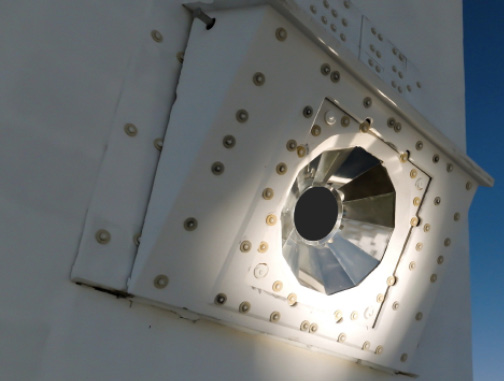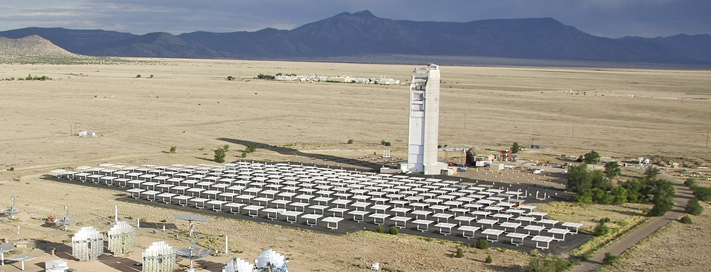
The U.S. Department of Energy has awarded $3.2 million to Solar MEAD, a joint project of its New Mexico affiliate, Sandia National Laboratories, Cemex S.A.B. de C.V., and Swiss concentrated solar thermal (CST) technology developer Synhelion. Investigators aim to replace the use of fossil fuels with CST energy to provide the 1,500°C heat required to calcine cement kiln raw feed—limestone, clay, plus alumina- and iron-bearing materials—and convert to clinker. The calcining and clinkering phase accounts for up to 60 percent of the carbon dioxide emissions associated with finished (ground, graded clinker) portland cement.
Solar MEAD will pick up on a 2022 demonstration in Spain, where Cemex and Synhelion produced a clinker specimen at lab scale from CST-derived heat. Sandia Laboratories will host the project at its National Solar Thermal Test Facility in New Mexico, and offer subject matter expertise to help accelerate the adaptation of CST to cement clinker.
“Cement produced with solar energy is an exciting technology with tremendous potential to reduce the carbon footprint of cement production,” says Cemex CEO Fernando González. “Achieving our net zero carbon goal by 2050 will require relentless innovation such as this to discover and scale breakthrough technologies.”
“Few renewable technologies are capable of generating heat at the temperatures needed to process raw cement feedstock,” adds Sandia researcher and Solar MEAD Principal Investigator Nathan Schroeder. “This project will advance our understanding of how to use concentrated solar thermal technology to gather and deliver the heat to existing cement production facilities and will have crosscutting relevance to other ore processing industries such as refractory, ceramics, and battery production.”

“The project offers us the opportunity to use our sustainable technology to support the decarbonization of energy-intensive cement clinker production,” affirms Synhelion Co-Founder and CEO Gianluca Ambrosetti. “This solution can have a huge impact on the industry and will help to pave the way towards net-zero.”
CARBON DIOXIDE EMISSIONS REDUCTION TARGET ECLIPSED
Along with solid 2022 financials, Cemex S.A.B. de C.V. reports a 4.6 percent year-over-year reduction in carbon dioxide emissions tied to its global cement, aggregate and ready mixed concrete operations, compounding a record 4.4 percent cut achieved in 2021. Under Future in Action, a program unveiled in 2020, the producer is methodically improving carbon metrics throughout this decade. Progress on the benchmark metric, net kilograms of CO2 per ton of cementitious material, is indicated in last year’s figure: 564 kg versus 571 kg the prior year, both against a 1990 baseline of 800 kg/ton. Future in Action envisions 430 kg/ton by 2030.
“Since the introduction of Future in Action, we have reduced emissions by approximately 9 percent, a [figure] that in the past took us more than a decade to achieve,” says Cemex CEO Fernando González.
With nearly 90 millions tons’ of cement production capacity in Americas, Europe and Middle East markets, the company is committed to achieving carbon neutrality through relentless innovation and industry-leading research and development, he adds. Cemex likewise remains at the forefront of the circular economy in the construction value chain—pioneering ways to increase the use of waste and residues as alternative raw materials and fuels in its operations.
Solar MEAD investigators will test the Synhelion solar receiver’s potential for providing cement production heat at scale. Sandia Laboratories has built a knowledge base of concentrated solar thermal concepts at its National Solar Thermal Test Facility, home to the 200-ft. Solar Tower and a sun ray-capturing, 212-heliostat assembly.